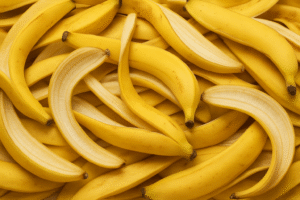This blog explores various methods to preserve flowers, including air drying, pressing, silica gel, glycerin, freezing, wax dipping, and microwave drying. Each technique helps retain the beauty, shape, and color of flowers, allowing cherished memories to last longer.
Introduction
Hello everyone ! Welcome to SasVibe. Flowers hold special memories, whether they were gifted on a birthday, received on a wedding day, or picked from a garden. Preserving flowers allows you to capture those moments and enjoy them for years to come. While flowers naturally wilt over time, there are various methods you can use to preserve them, keeping their beauty intact. In this guide, we’ll walk you through some of the most popular techniques for preserving flowers, along with tips to ensure they last as long as possible.
1. Air Drying Flowers
Air drying is one of the simplest and most popular methods for preserving flowers. It works best for flowers with sturdy stems and blooms, such as roses, lavender, or baby’s breath.
How to Air Dry Flowers:
- Step 1: Gather your flowers into small bunches, securing the stems together with string or a rubber band.
- Step 2: Hang the bunches upside down in a cool, dry place away from direct sunlight. A dark area helps the flowers retain their color better.
- Step 3: Leave the flowers to dry for about 2 to 4 weeks, depending on the type of flower and humidity levels.
- Step 4: Once the flowers are completely dry, remove them from the string or band. You can now display them in a vase or use them in crafts or decorations.
Tip: Air-dried flowers are delicate, so handle them with care to prevent breakage.
2. Pressing Flowers
Pressing flowers is an excellent way to preserve their flat shape and vibrant colors. This method is perfect for smaller flowers or flower petals that can be used in scrapbooks, artwork, or framing.
How to Press Flowers:
- Step 1: Choose flowers that are fresh and not too thick. Remove any excess stems and leaves.
- Step 2: Place the flowers between two pieces of parchment paper or newspaper.
- Step 3: Insert the flowers and paper into the pages of a heavy book, making sure they’re flat. Add extra weight on top of the book if needed.
- Step 4: Leave the flowers to press for 1 to 2 weeks. Once fully dried and flattened, carefully remove them.
Tip: For quicker results, use a flower press or try the microwave pressing method by placing the flowers between two ceramic tiles and microwaving for short intervals.
3. Using Silica Gel
Silica gel is a popular method for preserving the full shape of flowers, especially those with intricate structures like roses, dahlias, and zinnias. The silica gel absorbs moisture from the flowers, preserving their shape and color.
How to Preserve Flowers with Silica Gel:
- Step 1: Place a layer of silica gel crystals in a shallow, airtight container.
- Step 2: Arrange the flowers on top of the silica gel, face up, and carefully pour more silica gel over the flowers until they are completely covered.
- Step 3: Seal the container and leave it undisturbed for 1 to 2 weeks, depending on the size and type of flower.
- Step 4: After the flowers have dried, gently brush off the silica gel with a soft brush.
Tip: Silica gel can be reused multiple times for future flower preservation projects.
4. Using Glycerin
Glycerin is a great way to preserve flowers while keeping them soft and pliable, as it replaces the water in the flower with glycerin, which prevents wilting and drying.
How to Preserve Flowers with Glycerin:
- Step 1: Mix two parts water with one part glycerin in a container.
- Step 2: Submerge the flower stems into the solution, ensuring they are fully covered.
- Step 3: Leave the flowers to absorb the glycerin for 2 to 6 weeks. You’ll know they’re ready when the blooms and leaves become soft and leathery.
Tip: Glycerin works well with sturdy, woody flowers and foliage like eucalyptus and hydrangeas.
5. Freezing Flowers
Freezing flowers through freeze-drying technology is a professional method that requires specialized equipment. It is one of the best ways to preserve both the color and shape of flowers without losing their natural look.
How Freeze-Drying Works:
- Step 1: The flowers are placed in a freeze-drying machine, where they are frozen at a very low temperature.
- Step 2: A vacuum removes moisture from the frozen flowers, preserving their structure and appearance.
- Step 3: The process can take several days, but it results in beautifully preserved flowers that retain their full shape and color.
Tip: While effective, freeze-drying is often done by professionals and can be expensive, but it’s ideal for preserving wedding bouquets or special arrangements.
6. Wax Dipping
Wax dipping is a quick method for preserving flowers, allowing them to retain their vibrant color and shape for several months.
How to Preserve Flowers with Wax:
- Step 1: Melt paraffin wax in a double boiler over low heat.
- Step 2: Once the wax is melted, dip each flower into the wax, ensuring that it’s fully coated.
- Step 3: Gently shake off the excess wax and hang the flower upside down to cool and harden.
Tip: Wax-preserved flowers won’t last forever but are perfect for temporary displays or events.
7. Microwave Flower Drying
For a faster preservation method, you can use a microwave to dry flowers. This technique requires the use of a microwave-safe container and silica gel.
How to Dry Flowers in the Microwave:
- Step 1: Place the flowers in a microwave-safe container and cover them with silica gel.
- Step 2: Microwave in short intervals of 30 seconds to 1 minute, checking the flowers after each interval.
- Step 3: Once dry, let the flowers cool before removing the silica gel.
Tip: The microwave method works best for small, sturdy flowers and is a quicker alternative to traditional drying methods.
Conclusion
Preserving flowers is a wonderful way to keep your cherished memories alive. Whether you prefer the simplicity of air drying, the elegance of pressing, or the detailed preservation of silica gel, each method offers a unique way to enjoy flowers long after they bloom. With these techniques, you can capture the beauty of nature and incorporate it into your home decor, craft projects, or keepsakes. Try out different methods and find the one that best suits the flowers you want to preserve!



